Introduction to AI Marketing
In business, efforts to increase profits follow the Pareto principle—a roughly 80/20 distribution whereby about 20% of efforts create about 80% of results. In marketing, precisely targeting the most profitable customers and effectively managing the buyer’s journey consume well over 80% of the company’s resources; yet customer acquisition still falls short of expectations. Artificial Intelligence (AI) marketing promises to fill this gap, but the concept can seem nebulous at first. Defining AI marketing and illustrating how it can dramatically improve both top-line and bottom-line profits clarifies its relevance and potential.
Marketing strategies have evolved in significant, paradigm-shifting ways. They progressed from mass marketing to brand marketing, followed by direct marketing, digital marketing, social media marketing, and customer-experience marketing, and now have entered the profit-driven AI-marketing stage. The transition to AI marketing results from the confluence of business needs, the availability of vast data, and technological innovations in Machine Learning, Natural Language Processing, and Predictive Analytics.
The Evolution of Marketing Strategies
The origins of marketing can be traced back to the industrial revolution in the nineteenth century when the volume of production had increased dramatically. This sparked demand for more efficient ways of finding able buyers and more effective methods of persuading and influencing buyers. Both marketing institutions and marketing activities have been evolving ever since, prompted by social and technological progress that led to alterations in societal structure and the diffusion of new services, media, and materials. Every significant change has required marketers to reorder their priorities concerning customers, distribution, channels, communication methods, and overall practices.
Perhaps the most classic example is the introduction of the marketing concept during the 1950s and 1960s, which coalesced around the idea of customer orientation. It is now recognized as one of the most important success factors of a business. Notwithstanding the difficulties involved in measuring the success of this strategy, customer orientation still lies at the heart of modern marketing literature. In the realm of service marketing, the relationship marketing concept provides the professional with a reassuring rationale for formulating marketing strategies with a customer orientation. The application of this concept acknowledges past failures in developing service products that reflect the specific needs and wants of individual customers as well as the necessity for effective distribution and pricing strategies.
Understanding Artificial Intelligence
is a prerequisite for grasping AI’s rapid adoption in marketing. AI, the theory and development of computer systems able to perform tasks normally requiring human intelligence, encompasses subfields such as machine learning, natural language processing, and predictive analytics. Machine learning refers to systems that use data to learn and improve prediction accuracy without explicit programming. Natural language processing allows machines to interpret spoken or written human language, facilitating tasks like automated customer service. Predictive analytics uses historical data to forecast future outcomes, enabling anticipatory marketing decisions. Through these techniques, AI contributes to making better, faster, and cheaper marketing decisions.
AI technologies come in many forms designed to process enormous amounts of data and make decisions with minimal human intervention. One technique decomposes complex data into useful financial metrics for smart investment decisions. Another analyzes discarded online dialogue among thousands of consumers to articulate a company’s brand voice. Yet another segment classifies Facebook friends into intimate friends versus professional colleagues based on their shared content. One system allows a business to personalize automated email responses and marketing sequences based on a user’s search or purchase history. Far from resisting this inevitable change, marketers who ignore it will cut off one of the most significant profit opportunities of their careers.
AI Technologies in Marketing
Understanding artificial intelligence (AI) is essential for unlocking new business opportunities. In its modern, business-centric interpretation, AI enables computers and machines to mimic human intelligence by learning from data. Among AI’s technological subset, machine learning, natural language processing (NLP), and predictive analytics are advancing rapidly, empowering business owners to analyze vast amounts of data, glean deeper insights from unstructured data, and make informed marketing decisions. These capabilities underpin the transformation of professional marketing into data-driven decision making (DDD). When a company leverages all available data to make and justify decisions, the organization’s success is magnified by dependence on research and insights rather than gut instinct.
Moreover, AI applications in targeted advertising, customer segmentation, personalization, pricing, product recommendations, enhanced customer experiences (via chatbots, virtual assistants, and intelligent voice assistants), as well as web, email, and social media marketing, are accelerating performance and growth. As capabilities continue to expand, the strategic benefits of AI investment will become increasingly salient for business leaders.
Machine Learning
Machine learning is a key AI technology that enables computers to learn from data and improve their performance over time without explicit programming. ML is especially useful for analyzing complex and dynamic datasets where business rules are constantly changing or difficult to define. Supervised learning uses labeled data to teach models how to map inputs to outputs. Clustering algorithms organize data points into groups of similar items without predefined labels — for example, to identify customer segments. Reinforcement learning seeks optimal strategies by rewarding desired actions and penalizing undesired ones.
Natural language processing allows computers to understand, interpret and respond in human languages, primarily text or speech. Personalized chatbots and voice assistants can now converse with customers in their own language, and sentiment analysis evaluates the mood of users based on text or vocal patterns. Predictive analytics leverages historical data to forecast likely future outcomes, such as customer churn, product demand and campaign effectiveness. These capabilities power more intelligent and dynamic business decisions, particularly for marketing planning and execution. Without AI techniques, many decisions depend heavily on instinct rather than data analysis—an increasingly unreliable way to succeed in today’s hyper-competitive markets.
Natural Language Processing
With plenty of data in hand, and the right algorithms selected, machines can be trained on that data to recognize patterns or create associations in the input it’s been given. Natural language processing allows for this association in languages. The classification is done by first training the algorithm on a set of predetermined labels, which can also be called categories in a classification problem. For example:
Does the text mention any European cities? Is it asking a question (interrogatory)? Does the author have a positive, negative, or neutral opinion about the topic? Once the neural networks are trained to recognize different categories, they can then be applied to new data, and attached to that data. A more advanced application allows machines to generate human-like text, called text generation.
Predictive Analytics
Predictive analytics forms an integral part of the data-driven technologies used in AI marketing. With the help of machine learning and artificial intelligence, companies can use patterns in historical datasets to make predictions on what will happen in the future, in a variety of fields, including marketing. Predictive analytics can be used for targeted advertising, customer segmentation, customer lifetime value prediction, and many other purposes.
The effectiveness of any predictive model depends greatly on the quality of the data used. With the growing use of chatbots, virtual assistants, and other automated touch points in addition to the traditional company websites and CRM systems, organizations are now able to gather comprehensive and accurate information on their past, present, and potential customers. The algorithms in use can process and analyze considerable amounts of data to find patterns and correlations, uncovering invaluable insights unavailable with other techniques. These insights allow organizations to better predict customers’ behavior in the future and make more intelligent decisions accordingly.
Data-Driven Decision Making
Marketing is no longer about making a few random decisions. In the past, marketing departments used intuition, cost, and budgeting to decide which markets to target, which campaigns to run, and how products should be priced. Sometimes these guesses hit the mark and the campaign was successful. More recently, improved analytics have allowed marketers to take educated guesses based on previous years’ selling volumes and using spreadsheets to make decisions. While this is a step in the right direction, a better way to make marketing decisions is through data. Data-driven decision making eliminates guesswork and ensures that all decisions are based on what the data say. Using machine learning, marketers can look at billions of pieces of data to identify hidden factors that influence buying behaviors. They can then predict when customers will purchase their products or services in the future. Furthermore, machine learning can identify which customers will be most responsive to specific marketing treatments, like receiving a survey or a discount. This ensures that marketers target the right customers—the ones who will most likely respond—increasing a campaign’s Return on Investment (ROI).
Data has been at the heart of marketing for a long time. Marketers collect data about customers for direct mail, telemarketing, and email marketing campaigns. When marketing becomes more precise and customer-centric, what data is being collected changes. It is no longer a broad look at 25- to 54-year-old women; it is now about a woman who has purchased an orange ticket, lives in an urban area, has sought treatment for diabetes in the past, and has read your newsletter in the past 30 days. This is extremely detailed information collected that enables personalization of campaigns and improves spending decisions.
Personalization and Customer Experience
AI-powered personalization tools enable companies to tailor their offerings and customer experiences based on individual needs and preferences. By analyzing vast amounts of data, these technologies can identify customer segments and generate predictive models that forecast future behavior, delivering more relevant messaging and enhancing customer engagement. This approach can improve customer lifetime value by increasing satisfaction, retention, and revenue per customer. Additionally, AI enhances brand loyalty through improved customer accessibility, finding patterns in buyer behavior, and streamlining the shopping experience.
Data-driven decision-making can be applied to various marketing functions, including targeted advertising, creative development, and product innovation. Furthermore, customer service is becoming more automated via chatbots and virtual assistants, which handle routine business inquiries swiftly. Email marketing platforms support real-time machine learning analysis and personalized distribution schedules. Ultimately, AI marketing enables businesses to surpass competitors by reducing expenditures, attracting new customers, and maximizing profitability.
Targeted Advertising
Targeted advertising uses data analysis to identify the right prospective buyers for a product or service. Artificial intelligence can analyze vast volumes of customer data, recognize trends, and predict who will be most receptive to an ad. AI can then automatically place ads where these consumers are most likely to view them. The efficiency gains from AI marketing remove much human intuition from a very time-sensitive process where the world changes second-by-second. On the downside, the data is often labelled incorrectly and many factors influencing targeting are not measured, such as time of day, location, or news headlines. Remember the slogan “If you’re not paying for the product, you are the product.” No wonder people are so worried about internet privacy, and the looming “technology winter.”
Targeted advertising, like all AI marketing methods, can boost profits. Consumers stand to gain from this too, as they receive valuable information about products and services they want and need. Understanding the capabilities and limitations of different techniques will help marketers embrace AI marketing while addressing its challenges. Personalization offers a tailored customer experience based on individual preferences, improving satisfaction and loyalty. AI can recommend products, create dynamic websites, customize email communications, and individualize chat interactions. Delivering the right message at the right time leads to increased customer engagement and higher conversion rates.
Customer Segmentation
Customer segmentation is the task of dividing a customer base into distinct groups that respond similarly to marketing strategies, have comparable preferences, or share common traits. The purpose is to identify segments that can be reached more effectively with tailored marketing messages or service offerings. Common segmentation criteria include demographics, geographic location, psychographics, and behaviour.
Decision Trees and Random Forests have been successfully applied to market segmentation. Tech companies like Microsoft and Netflix are leveraging AI to extract detailed insights from social media to enhance targeted advertising and data-driven decision-making. This approach allows marketers to deliver customized experiences while optimizing advertising spend. Ideal customer profiles, defined by income, profession, interests, or spending patterns, guide the creation of highly customized advertisements that propel reconversion.
Automation in Marketing
Also able to handle tasks without agents, AI Marketing drives smart email marketing, develops chatbots and virtual assistants, and lays the foundation for voice search. Natural language processing (NLP) technologies enable AI-powered conversational agents, while machine learning facilitates automated personalized email subject lines and content. These tools collectively advance voice search SEO and assist e-commerce sites with augmented reality product displays.
Regarded as integral components of a comprehensive AI marketing strategy, the newly emerging smart tools represent practical, ready-to-deploy solutions that improve operational performance. The other functional areas of marketing remain extensively reliant on human involvement and decision-making. Indeed, marketing became less skill-driven and more budget-driven following the rural exodus that occurred worldwide from the end of the nineteenth century and the start of the twentieth century.
Chatbots and Virtual Assistants
Chatbots and virtual assistants are transforming the marketing function by handling a controllable volume of information, delivering immediate responses, and continuously improving through machine learning. Chatbots, with their ability to provide detailed responses, precise targeting, and 24/7 availability, facilitate a consistent and personalized dialog with clients while reducing the workload of customer service teams. The implementation of chatbots can drive sales, increase lead engagement, enhance prospect and client experience, and build trust. Similarly, chatbots in e-commerce perform lead qualification, sales creating, marketing, and communications automation, and are available 24/7. They are especially effective in addressing common customer questions, shopping cart abandonment issues, retargeting lost customers, and serving as 24/7 personal assistants. Virtual assistants for marketing, designed to support the execution of campaign plans at all phases, guide the teams through the delivery process and eliminate human error.
Email Marketing Automation
A further task in marketing automation is the sending of e-mail. It is possible to automate the sending of e-mail on a specific date, following a customer or subscriber action, or based on a subscriber profile. This automation can also accomplish drip marketing, which allows a business to send pre-set messages on specific dates or set specific messages that activate after a number of days following the previous e-mail.
Communication between brands and buyers is carried out through chatbots, virtual assistants, and smart speakers. The message speeds up the search and comparison process, considerably shortening the purchase process. Additionally, initiating a conversation brings together two phases of the shopping journey—exploration and evaluation—and accelerates the conversion phase, even achieving immediate conversion through the purchase commands supported by voice technology.
Ethical Considerations in AI Marketing
The power of AI marketing to improve profitability has been demonstrated using several real-world case studies from the retail, financial services, and e-commerce sectors. AI enables organizations to identify new potential customers, market profitably to yet-untapped audiences, convert new and existing prospects, improve customer service, and increase brand recognition. However, the implementation of AI marketing comes with limitations and challenges—primarily privacy concerns and implementation obstacles—that must be carefully addressed to realize these benefits.
As AI-related services have become offered and matured, privacy concerns in marketing have come to the fore. The use of machine learning, in particular, often calls for the use of personally identifiable information (PII) such as current shopping habits, personal tastes, and demographic information. The pursuit of new potential customers using data mining also typically involves PII, sometimes even from countries other than that of the targeted customers. Ethical questions arise about whether it is appropriate—and sometimes even legal—to use such private data to generate business include the cost of implementing an AI system relate to the retention of the current IT infrastructure, possible headaches with not yet AI-ready data, the impact that such a project has on operational processes, and the management of resistance from different business areas.
Challenges of Implementing AI in Marketing
AI has been hailed as a technology that can slash labor costs and speed things up—for good reason, too. It can churn through gigabytes of data in seconds, summarize bits of text, scan photos for objects, and so on. Standard AI tools—chatbots, text or image generators, sentiment analyzers—can minimize the time and effort invested in producing reports, sketches, drafts, and first edits, even across different groups within an organization. These tools assist users in making decisions—and knowing if they did it always better than an AI. Why wouldn’t a large company—or perhaps an entire tax office?—employ AI assistants to answer emails, or even write the emails itself? Yet, in spite of substantial hype and the promised capabilities of AI, the fig leaf of automation is still holding up rather well.
Use the following sectionhead for the guidelines. The next color-group pairs highlight possible causes for this gap between potential and actual benefits. The first series details risks, the second the barriers to implementation. Revisit the Causes of the Gap at the end to check if—and how—AI is overcoming these challenges. The hype, which adds fuel to such high hopes, also bears some responsibility for blowing up the idea, and here especially the repetition and blurring of bold, ambitious, but misleading claims. This instills a nearly helpless feeling, from which it is no wonder that so many managers and employees simply wait—until the expectations are a little more realistic, or at least so concrete that they can grab them. Such warnings aside, promises do differ in quality, plausibility, and scope; some might indeed come true, and remain worthy of attention.
Data Privacy Issues
Some marketing programs use personal data to engage customers by anticipating their needs. A social-media website, for example, can suggest potential connections based on mutual friends, specific locations, or similar career achievements. However, the ability to predict customer preferences and behavior relies heavily on the use of personal data. Customers tend to be more accepting of organizations that use personal data to enhance the service experience than those that directly target them with offers or advertisements.
The increased use of AI-powered targeted advertising raises concerns about data collection and privacy. Using personal data to target individuals with advertisements is not illegal, provided the data was acquired in a lawful manner. Nevertheless, issues arise when targeting strategies are not well-explained or appear too intrusive. Moreover, AI-based analysis can reveal aspects about individuals or groups that they themselves do not fully recognize. Individuals might be unaware that consent given for a specific purpose can be repurposed for other, previously undisclosed uses. Unsuspecting individuals could be targeted because they are economically disadvantaged or susceptible to specific content and therefore more likely to respond to certain offers.
Integration with Existing Systems
To fully realize AI’s potential in marketing, seamless integration with existing systems is paramount. This ensures streamlined business operations and optimized workflows. Analysts Maribel Lopez and Michael Krigsman highlight the risk of increasing operational costs and internal friction when adopting cloud architectures are not closely aligned with business functions. Indeed, the convergence of cloud and on-premise infrastructure in hybrid architectures complicates the process. Lou Bajuk, CTO at empow, warns, “A bad cloud integration can wreak havoc in an organization. It leads to unreliable connections, inconsistent business processes, and data becoming all out of sync.” Bajuk advocates for business-function-level integration with cloud services to maintain synchronization and reliability.
Practical application illustrates these principles. When integrating existing frameworks, companies like AXA collaborate with start-ups to enhance user-experience aspects. Similarly, American Express partners with Uber, while Daimler connects with Hailo. Such cross-industry collaborations leverage complementary advantages, underscoring the strategic importance of functional-level, business-aligned integration in AI marketing implementations. Applications that utilize machine learning algorithms to support and improve campaign-personalization strategies execute business-function-tailored activities, effectively synchronizing business services with cloud services.
Case Studies of Successful AI Marketing
Smart marketing decisions enable businesses to spend less and improve sales on traditional channels of marketing, such as online advertising or point-of-sale promotions, but it can be difficult to continuously make such smart decisions. AI systems are already solving this issue in the retail sector by learning from customer data about taste and preferences and placing for-selling goods at a store. For example, Foot Locker has implemented AI bots to manage inventory, so products are brought in and out of warehouses efficiently without stock shortages or overstocking. AI-based demand forecasting enables Johnson Controls to manage the needs of its retail customers more efficiently. Predictive systems enable retailers to make better pricing decisions. Interactive Floor Planner is an AI tool developed by Cambridge Consultants that helps interior designers and retailers generate new layouts optimized for profitability.
The financial services industry utilizes AI technologies to analyze vast datasets and generate intricate insights linked directly to targeted marketing campaigns. The Capital Bank of Jordan employs an automated system that enhances sales conversion rates by 70% through the creation of persuasive content based on financial products and services. In e-commerce, AI-powered tools like Shopify’s Kit help marketers manage advertising campaigns, create personalized email marketing content, streamline business operations, and engage in social media marketing.
Retail Sector
AI marketing is the application of artificial intelligence technologies and tools to help brands grow their profits. As in every sector, the retail industry continuously evolves in order to provide a better customer experience. The most important aspect of these improvements is the use of advanced technologies, and AI emerges as a game-changer in retail. AI applications enable businesses to provide services and products in a more personalized way and improve customer satisfaction. Operators explore new AI-driven possibilities to make intelligent choices that are essential for leading future retail markets. To provide a better experience, companies must understand and respond more quickly to customers’ feeling, desires, needs, and wants, rather than only react to customer requests. Additionally, providing customers with a fantastic shopping experience is crucial because attracting new customers can be five times as expensive as retaining current customers.
Retailers can also use AI to simplify the payment process, making it as quick and simple as possible. A recent McKinsey survey of shoppers revealed that 63 percent would prefer to shop at a retailer offering a smooth and easy checkout. AI can be applied to e-commerce in multiple ways. Machine learning can analyze data from search histories, spending habits, and social media activity to provide accurate product recommendations for various customer segments. For instance, Safaricom used Big Data technology to analyze customer spending behavior and suggest additional or alternative products and services.
Financial Services
Financial services firms have leveraged AI for decades, using the analyzing power of algorithms to predict stock market trends and identify high-performing assets. Today the application of AI in the financial services industry has expanded from predictive analytics to include intelligent content creation, enhanced personalization and customer experience, chatbot automation, intelligent speech recognition, and more. AI solutions are adopted not just by hedge funds and quantitative teams but across all branches and departments of financial services companies—investment research, wealth and asset management, client relations, back-office operations, marketing and sales, and fraud detection.
Financial marketers use AI-generated insights to design hyper-personalized experiences for customers and to inform decisions about asset allocation, risk tolerance, and more. Intelligent chatbots can route service requests, schedule meetings, or complete transactions, freeing human agents to spend their time on more complex or sensitive requests. Predictive analytics allow investment advisors to forecast future market conditions, so they can make adjustments that improve client outcomes. In fraud detection, AI algorithms identify unusual patterns and vulnerabilities in real-time to help prevent financial loss. It is clear that artificial intelligence in financial services has evolved from a back-end capability to a customer-facing function and a driver of competitive advantage.
E-commerce
businesses have also strongly benefited from the implementation of AI marketing because most online customers demand personalized messages and special offers. As e-commerce mainly uses digital marketing, it can harvest a large amount of customer information, behavior, location, and interests—all of which can be used by AI-powered algorithms to forecast the customers’ market needs and make the buying experience a more pleasurable and convenient one. One excellent example is the Amazon retail business for books, which sends individual emails to members offering both book recommendations and special offers based on their reading interests and personal characteristics.
AI marketing can host more specialized websites that offer the customers a wide variety of options and personalized recommendations based on their online activity, interests, and purchase histories. The result is a satisfying shopping experience that makes the customers feel unique and appreciated. Moreover, implementing AI marketing in e-commerce increases a company’s return on investment (ROI) because it can generate high traffic, identify and target high-potential buyers, retain existing customers, and reactivate dormant customers.
Future Trends in AI Marketing
Following the recent launch of ChatGPT by OpenAI in November 2022, interest in AI for the marketing domain is rapidly expanding. Augmented intelligence applications to support marketing decision-making and daily prosaic responsibilities are becoming better understood. While these applications employ different approaches, they share an underlying principle: utilizing data from past successful marketing decisions to predict various elements required for current and future marketing decisions and execute those decisions at a deeper level of personalization and customizability.
Marketing represents a broad category of many different departments within an organization. Specialized roles exist in digital marketing, product marketing, brand marketing, advertising, communications, content marketing, copywriting, corporate relations, social media management, public relations, trading, and many others. Marketing specialists consequently focus on different areas of the marketing intelligence process and are involved at different stages of the marketing decision-making framework. Expertise in either conversion, branding, or customer experience development broadly supports the marketing functions. Regardless of role, the foundational level of any form of marketing is convincing the market that the company’s offerings provide enough value to warrant an exchange of goods or services for money.
Voice Search Optimization
Voice assistants like Amazon’s Alexa, Apple’s Siri, and Google Assistant have become increasingly popular. As a result, up to 58% of consumers use voice search when looking for local business information. For marketers, optimizing for voice search is critical. Since voice searchers often speak in complete sentences, content using natural language ranks higher. Producing natural language content and tweaked HTML are essential components of voice search optimization. Virtual assistants cannot provide links in their responses, so websites promoted through voice assistants receive increased visibility. The key to voice search optimization is making content conversational.
Other forward-looking AI applications in marketing include gamification, augmented reality, and virtual reality. VR presents unparalleled opportunities for customer engagement with business products. While still in the early stages of consumer adoption, VR usage is growing rapidly, presenting opportunities for retail, entertainment, and real estate industries. Whether AI powers an experience through a voice assistant, gamification, or virtual reality, the ability to generate fresh, compelling content that creates a memorable digital experience is central to creating empathy, trust, and lifetime business partnerships.
Augmented Reality Experiences
Augmented reality is an interface that overlays computer generated images on a natural environment. Its capabilities will be transformational in the way companies engage their customers. Trying on products is now as simple as taking out one’s phone and holding it up. Augmented reality apps such as Amazon’s AR View and IKEA Place help consumers visualize furniture and other household items in their home environment. Timberland’s Tokyo store offers a similar experience with their All-Season AR concept. Customers enter the store with their phone/app open and hold the screen up as they would a camera. As they walk around 3D animations of pair of Timberland shoes appear on the screen in the real life surroundings.
IKEA’s AR app places a piece of furniture into the customer’s setting, allowing him/her to examine every detail and see how it will look in the room. The customer can change the furniture’s position, place several objects, and even view the room from a different angle. These apps allow customers to imagine how furniture and other home products will look in their own home, creating a customized shopping experience and removing much of the product doubt. The outcome: increased sales and much lower return rates. In addition, augmented reality allows retailers and brands to create customized, interactive experiences that have the potential to surprise and delight customers, thereby increasing brand consideration and affinity.
Measuring ROI in AI Marketing
As AI marketing continues to expand into a wide range of activities, functions, and tools, and as more organizations embrace AI for its profit-driven benefits, it is important to understand how to measure the return on investment (ROI) in AI-specific marketing initiatives. Marketers increasingly feel direct pressure from the finance team to clearly quantify the return that the business is receiving from the investment in AI technologies and supporting content/people/process financial expenditure.
Across the marketing mix — one of the most popular models used to help companies direct their marketing efforts — AI tools can be employed to different degrees and in different ways. Marketing ROI analysis is a well-established practice applied to the 4Ps, 7Ps, and even more complex marketing mixes. Applying marketing ROI principles to AI-enhanced versions of traditional marketing can minimize the impact of any internal friction between financial and marketing teams.
The Role of Social Media in AI Marketing
Social media, already seen as valuable for many business functions, owes much of its recent success to AI marketing. Many individuals engage with chatbots that serve as virtual assistants before they even notice. The automated nature of these agents allows 24/7 availability and the ability to answer a variety of questions.
Online businesses face heightened competition, rendering traditional online marketing strategies less effective at standing out. AI-based approaches, encompassing chatbots, virtual assistants, and email marketing, help businesses remain competitive and increase profitability. These tactics streamline communication and improve processes by automating responses and inquiries.
Building an AI Marketing Strategy
Artificial intelligence offers countless opportunities, but success begins with defining business objectives and marketing goals—and then building a strategy that taps the most valuable use cases for the data and AI tools available. Digital marketing leaders need a well-defined and documented strategy for AI marketing implementation, but many find that difficult to articulate. For example, a survey of marketing managers revealed that only 14 percent said that AI marketing was fully integrated and operational within their organizations. When professionals do identify a need, 81 percent view search marketing as most appropriate for AI applications, while email, paid social advertising, and demand generation also come into play.
Creating a thoughtful AI marketing strategy requires understanding how to segment clients according to their likelihood of responding to campaigns. By exploiting aspects of AI such as machine learning and predictive analytics, marketers enhance the effectiveness of targeted advertisements through increased data precision. A robust AI marketing strategy must be clearly articulated across the organization to ensure that all employees are on board. This emphasizes the collaboration between machine learning specialists, data analysts, and marketing professionals, helping the company to gain a comprehensive, long-term perspective of its business and customers.
Collaboration Between Marketing and IT
As artificial intelligence continues to evolve and redefine the marketing landscape, the role of teamwork in implementing AI marketing strategies is particularly crucial. Collaboration enhances the potential of AI by uniting marketing’s creative talents with IT’s technical expertise. Marketing professionals need assistance from IT departments or data scientists to analyze large data sets and develop predictive tools, while IT requires marketing’s creativity for implementing automation. Establishing strategic bonds among these groups using a data-driven plan ensures equal participation in decision-making, instead of a dominant control dynamic.
When setting up such partnerships, marketing leaders should define clear objectives, gather necessary data, and communicate with stakeholders across business units and departments. These conversations help identify all required skills and talents for successful AI initiative execution. Prospective collaborators can then be sourced from internal and external resources, including consultants, freelancers, agencies, and software solution providers, and recruited promptly. After candidate selection, in-depth discussion of the marketing vision is necessary for embedding objectives into the AI strategy. Continuous evaluation of progress maintains alignment, with open communication encouraging partner contributions beyond assigned tasks. Finally, a thorough assessment of the finished project is vital to measure long-term strategic success.
The Impact of AI on Consumer Behavior
Artificial intelligence is changing the way businesses cater to their customers. It provides companies with new ways to understand customers’ needs and wants, reach customers during the buying process and offer enhanced customer services. Companies are becoming more tailored and more predictive at addressing their customers’ needs.
This is also changing the way people buy. Consumer behaviour is transforming to embrace these new services. Artificial intelligence – smart algorithms that learn and automate sophisticated activities — is at the core of this change. Buying patterns have shifted over the past several decades, and are now poised for another dramatic evolution over the coming years with the emergence of new AI services like voice search and recommendation engines and the growing adoption of machines like smart speakers, AR and VR glasses and autonomous vehicles.
Skills Required for AI Marketing Professionals
AI marketing demands updated skills and capabilities from marketing professionals. These include critical thinking for developing AI-based strategies and interpreting data; creativity for generating innovative ideas and content; business, management, and people skills for collaboration; technical skills for integrating AI solutions; data skills for ensuring dataset quality; and storytelling skills to shape marketing messaging. Specific abilities also vary with the chosen AI application. Similarly, recent studies identify data literacies, foundational, analytical, and human skills as essential. Indeed, the workforce must upskill or reskill for new roles. Leadership support and a growth mindset are critical enablers.
Regardless of technical background, collaborating with data scientists is vital to harness AI benefits. At a minimum, professionals should understand AI’s strengths and limitations, focusing on tasks that humans do best and leveraging AI to enhance productivity and creativity. Currently, many marketers lack sufficient AI knowledge; to close this gap, they need adequate training.
Conclusion
AI marketing is a digital marketing approach that uses artificial intelligence technologies to achieve higher profitability. It is an advanced form of data-driven marketing that utilizes machine learning, natural language processing, and predictive analytics to optimize marketing activities by analyzing large volumes of data. With the potential to transform profitability, AI marketing enables businesses to capitalize on multi-channel marketing opportunities and support sales growth and efficiency.
AI marketing can process enormous amounts of data to understand customers’ interests, segment the targeted audience, and optimize marketing campaigns accordingly. Automated responses through chatbots and virtual assistants reduce response times, create conversational marketing flows, and increase the efficiency of email marketing. The increasingly complex data-driven marketing ecosystem makes it hard for marketers to control the entire process. AI-powered tools offer real-time analysis and recommendations, enhancing campaign performance and return on investment. By automating repetitive tasks, marketers can spend their time on more strategic matters. Organizations that successfully integrate AI marketing into their workflows and set clear goals gain valuable competitive advantages.


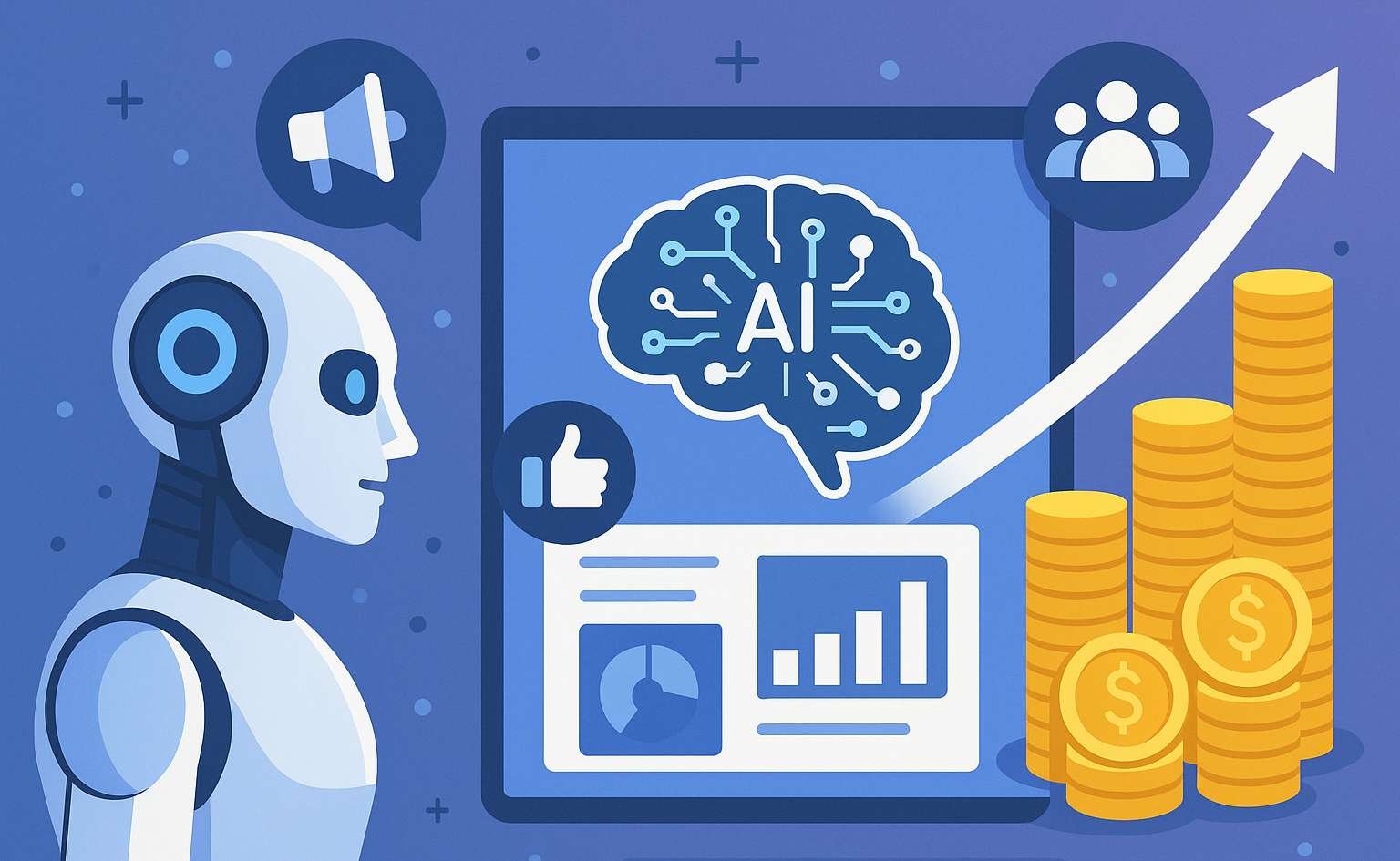
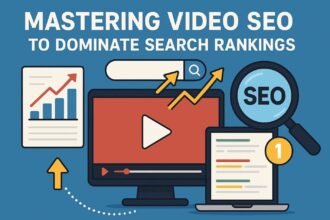
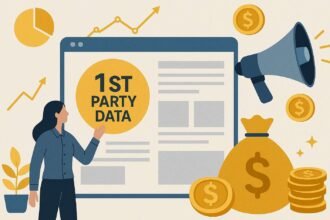





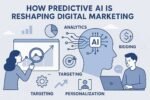
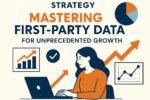

One Comment
Woww amazing beautifull